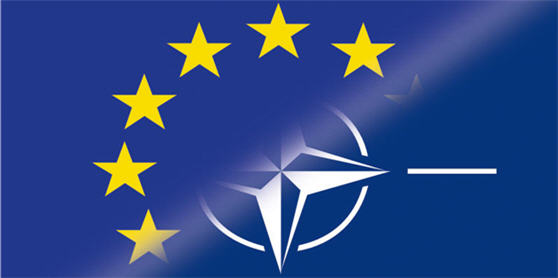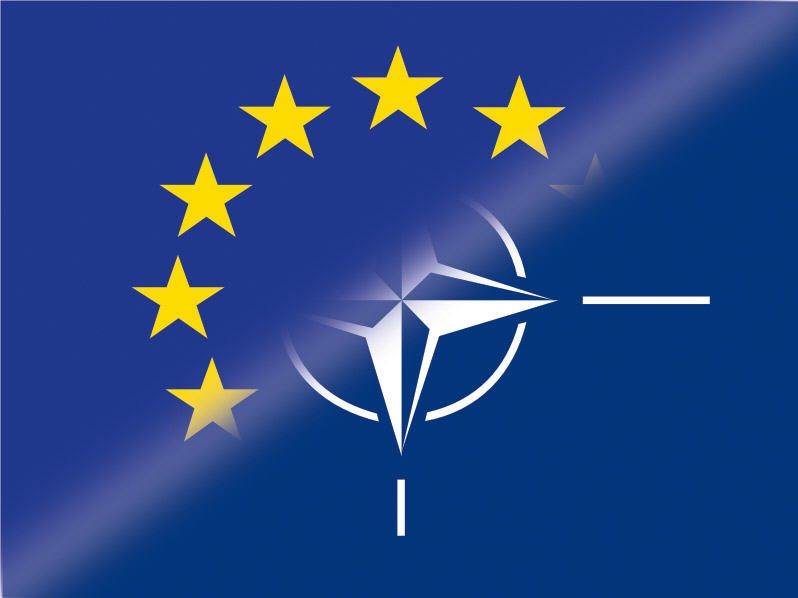
With many of the world’s navies engaged in anti-pirate patrols off the coastal waters of Somalia, it’s no surprise to find French, German and Spanish frigates among them. The frigates are there, though, not under their respective national commands, but rather under that of a joint EU naval force, whose mission is to protect World Food Program vessels delivering food aid to Somalia, as well as commercial and other vessels threatened by pirates in the Gulf of Aden.
While EU NAVFOR Somalia is the EU’s first maritime operation, it is not its first military operation, whether in Africa or beyond.
The EU might lack major permanent military capabilities and assets, not to mention a strictly unified foreign policy. It has also yet to formulate clear agreements for joint operations with other military organizations, most notably NATO.
But it has had the power to deploy expeditionary forces over great distance for some time. EU troops have deployed under the EU flag to Chad, Darfur and Congo, not to mention Bosnia, Kosovo, Palestine, Afghanistan, Aceh, South Lebanon and a host of other places — as observers, peacekeeping “monitors,” police trainers and soldiers.
In almost all of these instances, the EU has operated in support of U.N. Security Council resolutions, often alongside U.N. troops, and in some cases, such as South Lebanon, as part of a U.N. peacekeeping mission. It has also frequently operated alongside NATO troops, despite the two organizations sharing many member states. Indeed, 21 countries are members of both NATO and the EU, but you wouldn’t know it by observing their coordination in real time.
Does it matter which organization the troops adhere to? To some people it does. After the Cold War ended, policymakers designing European security architecture seemed to agree that NATO should operate “out of area,” that is, on expeditionary missions, while continuing to provide for Europe’s external defense. For its part, the EU was expected to develop the capacity to take care of problems closer to home. The architectural mot du jour was “interlocking institutions.”
This did not happen as planned, in part because NATO was forced to step in when the EU proved unable to intervene effectively in the Balkans. NATO enlargement also proceeded faster than that of the EU, despite the wishes of many people — particularly in the U.S. — that the process happen the other way around.
As a result, NATO and the EU now coexist with a confusing and ambiguous set of overlapping tasks, with no clear functional or geographical division of labor in the cards anytime soon. Nor have they signed any formal agreements regarding information sharing, security guarantees and a code of conduct, despite having troops, often from the same country, serving side by side in harm’s way. Playing it by ear is the order of the day. Instead of interlocking, the two institutions have become interblocking.
Bureaucratic inertia is not the only reason. The architects have a point.
Each organization serves different aims and national constituencies. Historically, NATO’s purpose, in Lord Ismay’s famous epithet, was to keep the Americans in, the Russians out and the Germans down. That formula is no longer valid. The Americans are still in, but the Germans are now up for good and the Russians are far less menacing. So NATO, apart from serving as the world’s expeditionary force of last resort, seems to linger on in order to keep the EU out of the security business.
Apart from that, both organizations have suffered from a lack of determination and clear vision. NATO has not managed to formulate a clear set of guidelines for “out of area” deployments, while discussions about a new strategic concept for the alliance continue inconclusively. As for the EU, its nascent security role seems rather unserious, in spite of its token deployments, mainly because hardly any European governments are willing to put their money where their mouth is — with many still paying lip service to NATO as being primus inter pares in the security realm.
Decision-making in both organizations can also be held hostage to the whims of its members, a problem exacerbated by conflicts that overlap the two bodies, such as that between Turkey (NATO), Greece (NATO and EU) and Cyprus (EU). Neither organization has proven greater than the sum of its parts so far as global deployments are concerned.
A single Euro-Atlantic expeditionary force would be too difficult to establish in these circumstances. But the two organizations could improve communication and coordination — both before and during crises — by integrating, to the greatest extent possible, relevant personnel in the various national foreign and defense ministries. The same officers ought to oversee both NATO and EU deployments, something that only happens now in a few governments, notably the British. On the ground, troops might even use the NATO and EU flags interchangeably, or even both simultaneously. There is a long precedent for this within NATO itself, where the American Supreme Allied Commander wears two “hats” as head of the U.S. European Command and as NATO’s top soldier.
But that would only be a temporary solution. A few more pirates with much bigger weapons could be enough to convince both NATO and the EU that they can no longer afford the luxury of lousy coordination and mismatched agendas. Having entered a policy field traditionally occupied by NATO, the EU needs to take more responsibility and get its defense house in order. And NATO must accept that it cannot remain the only player in Euro-Atlantic security forever.
Stéphanie Hofmann and Kenneth Weisbrode are fellows at the Robert Schuman Centre for Advanced Studies, European University Institute. This piece originally appeared at World Politics Review.
Image: nato-EU.jpg
